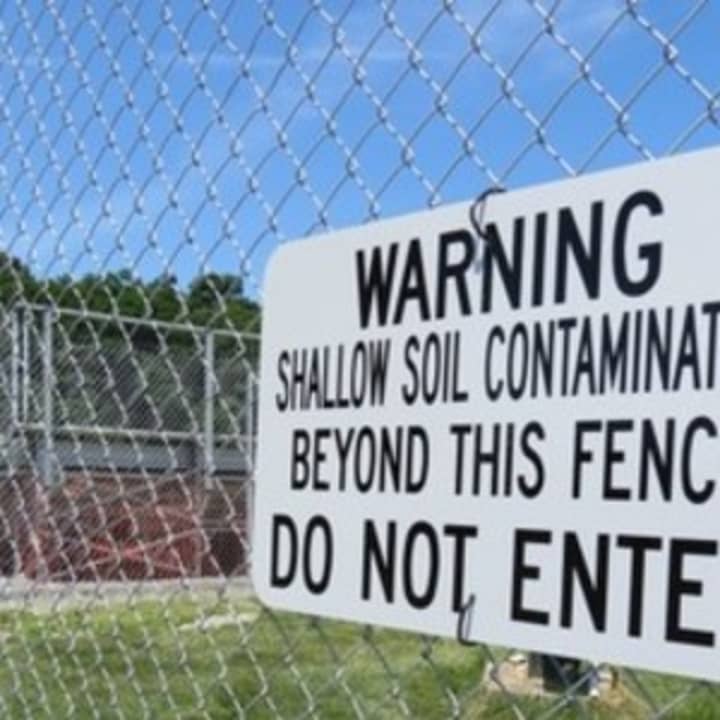Greenwich Public Works Commissioner Amy Siebert, Board of Education Chairman Leslie Moriarty, Superintendent of Schools William McKersie and hired consultant Mike Doherty of AECON presented a remedial investigation study, a human health risk assessment and an ecological risk assessment to the media at the Havemeyer Board of Education building.
The assessments summarize much of what has already been reported over the last 18 months. As previously stated by school officials, the study shows that the chemicals pose no imminent health threat to the public or wildlife.
The contamination was found in July 2011, when workers excavating parking lots for the school’s auditorium project, known as MISA, discovered soil that was darker than other dirt. Immediate environmental tests began. Low levels of lead, arsenic, barium, volatile organic compounds, polychlorinated biphenyls and petroleum hydrocarbons were found.
The final cost of the cleanup, which could be in the tens to hundreds of millions, is still being assessed in a feasibility study.
The MISA project's timeline should not be affected by the cleanup, Seibert said.
More than 1200 soil samples from 260 soil borings, 56 groundwater samples collected from 29 monitoring wells, 45 sediment samples, 26 surface water samples, eight ambient air samples and five soil vapor samples were tested for hazardous chemicals. During all sampling phases, the samples collected were shipped to state certified laboratories for analyses.
"The health and safety of our students and staff are first and foremost," McKersie said. "In looking at this [study], I'm very confident given the expertise that is there, the evidence-based material that is there as we move forward in looking for what the solutions are."
Town officials, the Board of Education and environmental experts will host a presentation March 6, with time for questions and answers, on the site investigations conducted at and the remediation recommendations.
Click here to follow Daily Voice Greenwich and receive free news updates.



